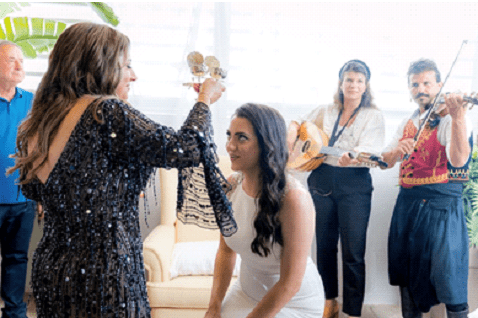Marriage as a mystery and a social event has deep roots in human society. Initially as a need for the development of society and the organization of the hearth, but also in relation to religious events, the weddings of Gods and kings were a sign of social progress. The role of the two sexes in both social and religious events is distinct.
Mainly in the old days, but even today in some regions of Greece, marriage preparations for girls started when they were still kids. Mothers made by hand dowries for their daughters (sheets, towels, embroidery) and collected all the necessities for their household. The dowry also included fields, herds of animals, and money. In many areas of Greece, the bride’s father was responsible for providing a furnished home for his daughter and son-in-law (Τα Ελληνικά έθιμα του γάμου και οι συμβολισμοί τους, χ.η.).
The wedding celebration can last for days. The couple’s parents, the groom’s godparents, who may be the groomsmen, friends and the whole neighborhood, take part in the preparation. During the wedding ceremony, the best man and the maid of honor exchange rings first, three times, and then crowns, also three times. In the past, the guests also took an active part, they stood around the couple and at the Isaiah dance they showered the bride and groom with koufeta and rice to root and at the same time they patted the best man on the back shouting “Axios”. In recent years, this custom has disappeared and only after the couple exits the church yard people throw rice on their heads (Τα Ελληνικά έθιμα του γάμου και οι συμβολισμοί τους, χ.η.).
It is a tradition for single girls to take a piece of koufeta, the almond candies, from the tray and put it under their pillow. On the third night they believe they will see in their dream the man they will marry. Another custom is for the bride to write the names of free girls on the bottom of her shoe. The first name to be erased is the girl who will marry first. All friends and loved ones also participate in the preparation of the newlyweds, dressing the two young people and shaving the groom (Τα Ελληνικά έθιμα του γάμου και οι συμβολισμοί τους, χ.η.).
When the bride leaves the house she must throw a ceramic, plate or glass behind her or break it with her foot, to leave behind all evil and start the new path with good. After the Wedding Mystery, the parents of the bride and groom go first and kiss the crowns, and then the newlyweds. Then, the bride and the groom go out of the church where all the guests wish them “Long Live”. In Greece, after the wedding ceremony the entire guests take a boboniere. Boboniere is confetti- almonds candies wrapped in tulle and the number of confetti must be odd, usually three or five. They often offer other sweets such as biscotoloukoumo. After the church all the guests go to the wedding feast, to celebrate with the married couple dancing the traditional dances. The bride opens the dance and the guests’ pin money on her wedding dress, as a gift (Τα Ελληνικά έθιμα του γάμου και οι συμβολισμοί τους, χ.η.).
The sacrament of marriage is not allowed on the following days:
⦁ January 5-6 ( The Celebration of Lights)
⦁ During Lent and Holy Week
⦁ Between 1-15 August
⦁ August 29 (Beheading of John the Forerunner)
⦁ September 14 (Exaltation of the Holy Cross)
⦁ Between 13-25 December
⦁ Despotic Feasts (All Feasts of Christ)
(Τα Ελληνικά έθιμα του γάμου και οι συμβολισμοί τους, χ.η.).
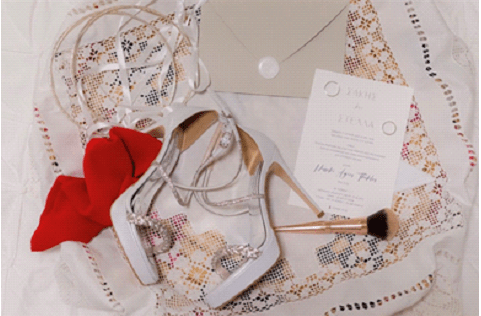
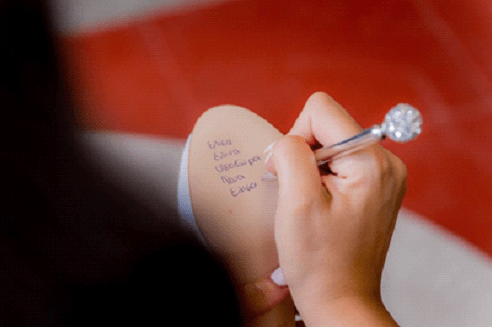
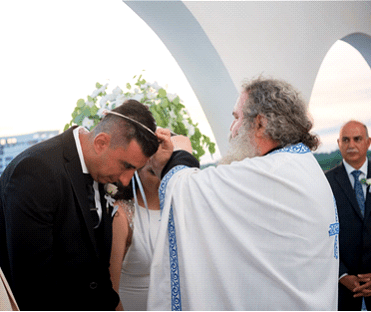
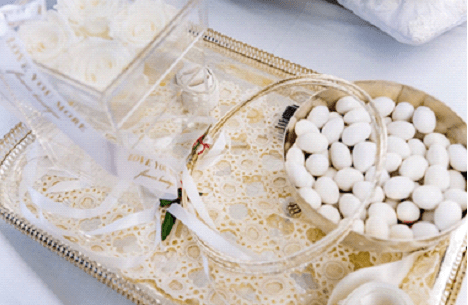
The Photos are kindly offered by Ms. Kardamila Stella and Mr. Sakis Rabotas
Bibliography
Τα Ελληνικά έθιμα του γάμου και οι συμβολισμοί τους. (χ.η.). Estelle Weddings. Retrieved November 12, 2022 from
https://www.estelleweddings.gr/%CF%84%CE%B1-%CE%B5%CE%BB%CE%BB%CE%B7%CE%BD%CE%B9%CE%BA%CE%AC-%CE%AD%CE%B8%CE%B9%CE%BC%CE%B1-%CF%84%CE%BF%CF%85-%CE%B3%CE%AC%CE%BC%CE%BF%CF%85-%CE%BA%CE%B1%CE%B9-%CE%BF%CE%B9-%CF%83%CF%85%CE%BC%CE%B2/

